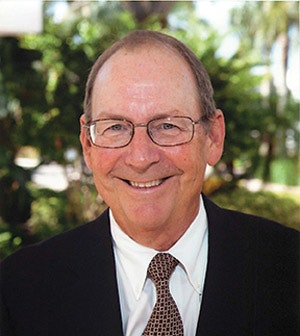While president of Wilson Sporting Goods at the time tennis was bouncing back from its 1990s participation slump, Jim Baugh began fielding calls from industry peers wondering how the turnaround could be replicated in other sports. That got Baugh thinking about a broader inactivity epidemic taking shape in America.
An original proponent of Carol M. White PEP Grants targeting underfunded physical education in schools, Baugh in January launched PHIT America (it stands for Personal Health Investment Today), a consortium of sports and fitness industry suppliers dedicated to supporting grassroots and school activity programs, advocating for commonsense U.S. legislation, and — above all — educating and motivating Americans. Paul Steinbach asked Baugh, a 2011 Sporting Goods Hall of Fame inductee, to assess the health of the industry and the nation at large.
 Jim Baugh
Jim Baugh
Q: How did tennis succeed in growing participation?
A: We had a five-session introductory program called Tennis Welcome Centers. We grew it that way, and then we evolved, and I ended up launching Cardio Tennis about two years later to capture people from the fitness craze. That was any-level-type play where people were hitting balls, moving to music and having fun.
Q: Are those programs still in use today?
A: The tennis industry has taken its eye off the ball in terms of Tennis Welcome Centers, in my opinion. Cardio Tennis still exists and actually is thriving. There are 1.4 million people in America today who are Cardio Tennis participants, and that's with very little promotion.
Q: Is physical education participation still trending downward?
A: I would say it's leveling off, but it's at a low point that's really embarrassing, because 48 percent of all high schools today have no P.E., and that's a desperate problem. The average budget for physical education equipment among all schools in America is $764 per year. At the high school level, there's virtually no support for programs other than the teacher, if they have one. Some schools don't even have an instructor.
Q: How do you keep PEP alive year after year?
A: Every year, it's not in the budget, and every year we lobby to get it there, because it's the only money in the entire Department of Education budget for physical education. So we fight, and we get it, and we keep it going every year. And we'll continue to do that.
Q: How have you spread your message in PHIT's first year?
A: There are 145 companies now part of PHIT America. That's probably our biggest accomplishment. We have a great base of companies working together. We send out articles to all our sponsors and have them use social media and other mechanisms to engage the entire industry and America on this topic.
Q: What can you do legislatively to combat inactivity?
A: The PHIT Act is what we're working on today. We feel it's time to allow pre-tax medical accounts to be used for physical activity expenses. We want to include health club memberships. We want to include taking classes from fitness instructors. We want to include equipment for fitness and for sports activities. It's legislation that's very important to America, because we really don't have a health care system today. We have a sick care system. We treat people after they're sick.
Q: How would you rate the health of the sports and fitness industry?
A: The industry has been living off of the frequent participant, and sports have become so serious — in some ways, too serious. But there's a real problem in that around our island of people who are active or super active, the beaches are eroding. We're losing participants and active people left and right, and our industry has to work together to turn that around. When you look at what's going on with population growth, basically every activity category is trending negative, and that doesn't bode well for us long term. So, you ask me how the industry is doing? I don't think we're doing too well.
Q: What are the stakes?
A: If it continues to 2018 the way it's been trending, the number of those who are inactive will increase to represent 31.1 percent of America. And that will mean that the industry at retail will lose $28 billion in sales, because an inactive person consumes far less than an active consumer. That's just retail sales. You have manufacturers' sales, you have fitness club dues. The impact of this is far-reaching.
Q: Are Americans, a third of whom are obese, ready to buy what PHIT is selling?
A: If you look at our website, we talk more about inactivity than obesity. The inactivity epidemic — that's the greater concern in my mind and for our industry. A lot of people are not overweight but not active, and that isn't healthy either. We have a phenomenal product called sports and fitness activity. We need to push it to America much more aggressively.

Access a PDF of research conducted on behalf of PHIT America.

































